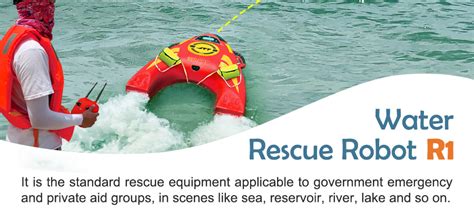The introduction of lifesaving robots on Lake Michigan beaches is an innovative step towards enhancing water safety. As technology becomes more integrated into our daily lives, leveraging it to ensure the safety of beachgoers is both timely and necessary. While traditional lifeguards remain essential, these robots serve as a supplementary measure that can respond faster and more efficiently in critical situations. The urgency with which many drownings occur necessitates the need for immediate intervention, which these robots can provide by bringing flotation devices swiftly to those in distress.
It’s important to consider, however, the nuances surrounding the effectiveness of these automated life-saving tools. Some skeptics argue that relying on robots might create a false sense of security among swimmers, leading to riskier behavior. This notion aligns with the theory of moral hazard, where increased safety measures could potentially encourage more reckless actions. Nevertheless, empirical evidence and various comments from experienced individuals suggest that the mere presence of these robots does not promote irresponsible behavior but rather acts as an additional layer of precaution.
The dialogue in the comments also highlights the diversity of opinion on the best approach for rescuing swimmers. For instance, some suggest innovative ideas such as a ‘life jacket cannon’ or drones that could deploy flotation devices rapidly. While these proposals are intriguing, they present practical challenges in terms of accuracy and effectiveness. As user Voloskaya mentions, getting the perfect aim in high-wind conditions—a common scenario on large bodies of water like the Great Lakes—can be highly challenging. Therefore, the ability of the robots to directly navigate to the person in need is a vital advantage.
Regulatory and compliance issues also play a crucial role in this conversation. In contrasting the regulatory frameworks of the U.S. and countries like New Zealand, it becomes evident that there is a need for stricter regulations and better enforcement in the U.S. regarding life jacket usage. While federal laws do mandate the use of life jackets for children, there is a clear gap in enforcement, especially for adults. This inconsistency can be mitigated by broader implementation of robotic aids that can quickly provide assistance and flotation, potentially saving lives before human intervention can take place.
From a broader perspective, these technological advancements also reflect societal shifts towards integrating AI and robotics into everyday safety measures. Although the term ‘robot’ might conjure images of autonomous machines, it is crucial to understand that many of these devices are remotely operated, enhancing their precision and effectiveness. As user marcellus23 observed, these so-called robots are often remote-controlled boats, yet their efficiency and rapid response time distinguish them from traditional methods and classify them under the technological enhancements umbrella.
In conclusion, while the debate around the use of technology in drowning prevention is multifaceted, the consensus leans towards its remarkable potential to save lives. The integration of life-saving robots on Lake Michigan is a pioneering example of how technology can be harnessed to address real-world problems. Their ability to swiftly deliver flotation devices, combined with the existing efforts of human lifeguards, presents a comprehensive approach to tackling the pressing issue of drowning. As this technology continues to evolve, it holds great promise for making our waters safer for everyone.


Leave a Reply